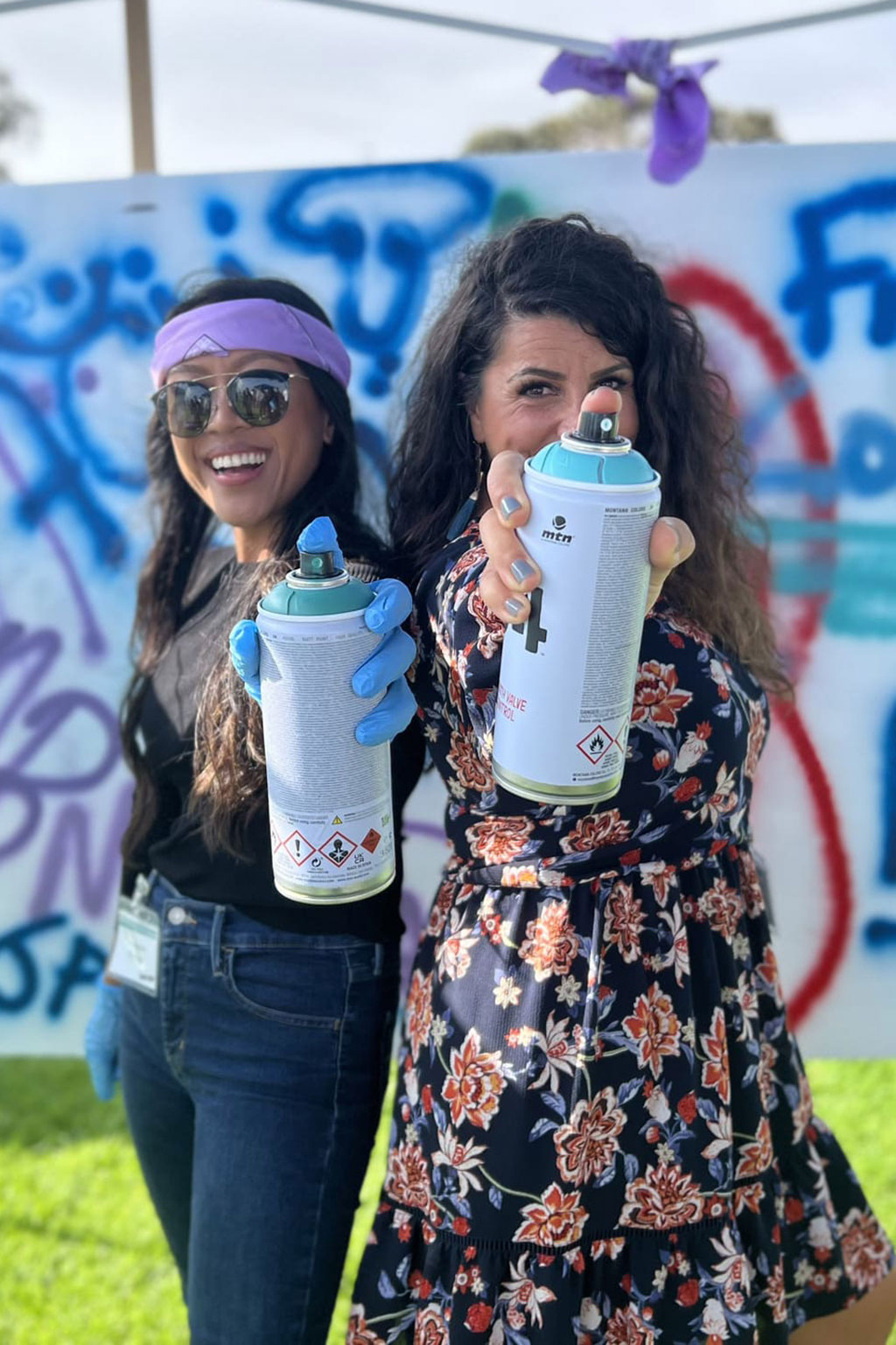The Tricks to Tackling Team Building
Interview with James Bennett
Photo courtesy of Firefly Team Events
In the face of low employee morale, tepid collaboration, drooping productivity, and other workplace woes, team building offers a powerful salve—and one service is taking a refreshing approach to this essential strategy.
James Bennett, cofounder and CEO of Firefly Team Events in Orange County, California, shares insight into his company and how synergetic antics can spark a more unified workforce.

Would you describe what your organization does?
Firefly Team Events creates awesome virtual and in-person events designed to bring out the best in teams, letting employees connect and explore culture using play. We are all about fun. For instance, we arrange scavenger hunts, pickleball tournaments, BattleBots-style fights between remote-controlled cars, all kinds of game shows, Mural Madness sessions—in which an experienced artist leads people in making graffiti art—and so much more. Most of our events begin with a brief icebreaker to get everyone’s energy flowing, and if prizes are involved, we wrap up with an elaborate awards ceremony.
We believe in catering to the client, so we encourage business leaders to talk to us about their needs and company to help them select the craziest, funnest, and most impactful occasions. We serve small businesses, but we’ve also worked with some heavy hitters in the corporate world, including Dell, Netflix, and Sony.
What are the key benefits of investing in team building?
Helping people bond builds vulnerability-based trust, and trust is the foundation of any high-performing team. When you combine fostering relationships with play—as we do—it’s like a mega power boost that magnifies the effects, resulting in a more unified and even productive crew.
That’s why team building should be part of the foundation of every company. Many leaders don’t think to do it until there’s a lag in morale or performance, and while it might get people smiling for a while, it’s not going to fix those deep-rooted issues. Instead, they should use it as an ongoing maintenance tool, keeping their employees connected and happy. This can help prevent interpersonal conflict, loss of motivation, and other serious signs of a disjointed staff.

How might one of your events assists with this?
In all our offerings, we utilize the experiential learning model—or learning by doing—to help draw meaning out of a group’s experience. For example, if a team wants to work on a specific skill like communication or collaboration, then our Level Up workshop is a fantastic fit. We call it our Swiss Army knife of team building.
In these events, our facilitators use games and activities that are sequenced to help address a certain topic or need. They are lots of fun, but their true purpose is to provide a safe, encouraging way for people to interact. Facilitators will ask questions to get participants to reflect on what worked, what didn’t, what can they take forward into the next challenge, and how can they apply everything they’ve learned to their tasks in the workplace.
How does remote work complicate team building?
You might think it’s hard to bring people together if you manage a hybrid or remote team, but proximity is not actually essential to getting to know others. If it was, then every in-person work environment would be inherently more bonded. In reality, it’s possible to sit next to a coworker for two years and never learn that much about them. We at Firefly Team Events believe that connection follows the cycle of meet, learn, relate. And guess what: none of those require you to be standing next to someone.
A problem that remote work does add to the mix, though, is that talking requires greater intention. It’s not going to happen as naturally as it would in an office thanks to fewer chances for spontaneity. The classic water-cooler collision is a great example of where physical location can lead to talking. There’s not really an equivalent in the remote space.

What, then, should business leaders do to help foster connections?
If you really want to unite a remote team, create what I call “pockets of conversation.” These are opportunities for people to intersect and get to know each other. Sure, you might already schedule regular meetings or coworking sessions, but you also need to set up times when your team members can just talk and pursue stronger relationships. These conversation sessions, alongside team-building events, are directly tied to creating empathy and understanding—two core factors that help us relate with other people.
How would you advise those who aren’t seeing results from their team-building activities?
To get the most out of these efforts, you have to stop and ask yourself, Why do I need this in the first place? Trying to use a team-building activity without understanding your main impetus can cause more harm than good. After all, people and teams are complex in their own ways, so a one-size-fits-all solution won’t be overly effective no matter the “why.” Instead, the key is to take a personalized approach that suits your unique culture. And make it fun! That is the best way to reap results from these events.
For more info, visit fireflyteamevents.com
TAKE ACTION:
Reflect on any company culture challenges within your organization, and arrange ongoing team-building events that could better address these concerns.


















